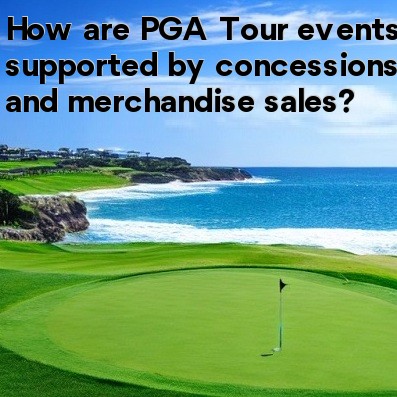
In the world of professional golf, PGA Tour events are not only supported by ticket sales and television rights, but also by concessions and merchandise sales. These additional revenue streams play a crucial role in ensuring the financial success of the events.
Concessions are an integral part of any PGA Tour event, providing attendees with the opportunity to enjoy food and beverages while watching the action unfold on the course. The range of concession options available can vary from event to event, but they generally include a variety of snacks, drinks, and even full meals.
Concession stands are strategically placed throughout the course, ensuring that spectators have easy access to refreshments regardless of where they are located. Some popular concession options include hot dogs, hamburgers, sandwiches, chips, popcorn, and various beverages such as soda and water.
Concession sales are typically managed by event organizers or contracted vendors who handle the operation of the stands. The revenue generated from these sales helps offset the costs associated with organizing the event, including player purses, course maintenance, and other logistical expenses.
In addition to concessions, merchandise sales also play a significant role in supporting PGA Tour events. Golf fans love to show their support for their favorite players and teams by purchasing merchandise such as hats, shirts, and golf accessories.
At PGA Tour events, merchandise is typically sold through various channels. On-site merchandise tents and trailers are set up near the course, offering a wide range of apparel, equipment, and memorabilia. These areas are often branded with the logos and colors associated with the event or specific players.
Online sales also contribute to the overall merchandise revenue. Many PGA Tour events have their own official websites where fans can browse and purchase merchandise from the comfort of their homes. These online stores provide an additional revenue stream and allow fans from all over the world to support the event.
The revenue generated from merchandise sales is generally split between the event organizers and the players. Players often receive a percentage of the sales for merchandise featuring their names or logos, while the event organizers use the revenue to cover expenses and enhance the overall experience for attendees.
- Concessions provide attendees with food and beverage options throughout the event.
- Concession stands are strategically placed for easy access.
- Concession sales offset the costs of organizing the event.
- Merchandise sales allow fans to support their favorite players and teams.
- Merchandise is sold through on-site tents, trailers, and online platforms.
- Revenue from merchandise sales is split between event organizers and players.
In conclusion, concessions and merchandise sales are crucial for the financial success of PGA Tour events. They provide attendees with refreshments and the opportunity to support their favorite players, while also generating revenue that helps cover the costs associated with organizing the events. Without these additional revenue streams, it would be challenging to maintain the high level of competition and experience that fans have come to expect from professional golf tournaments.





